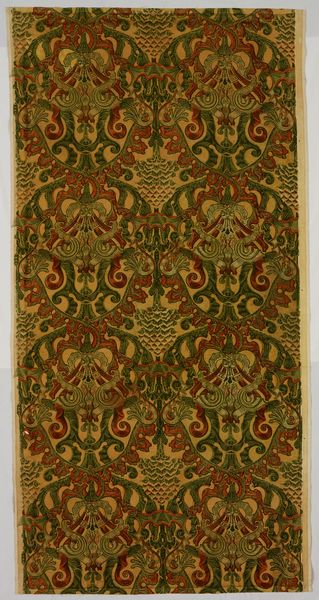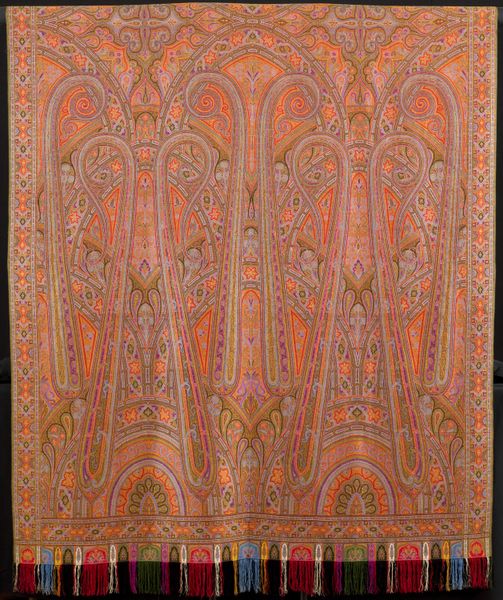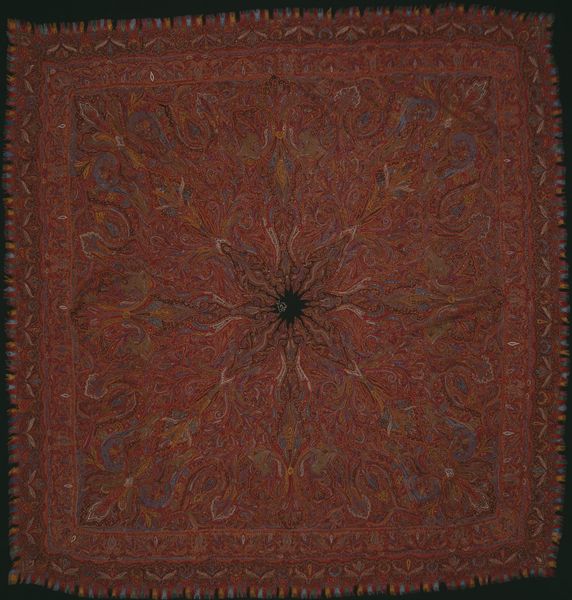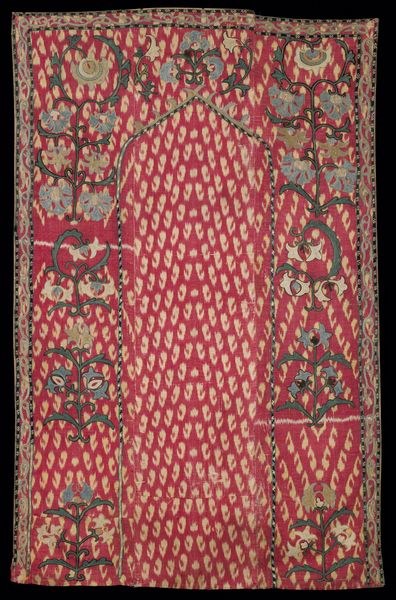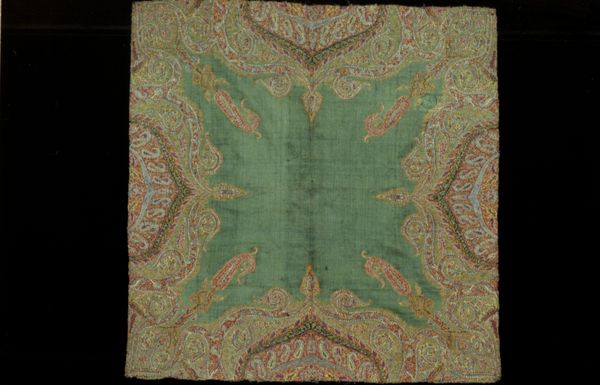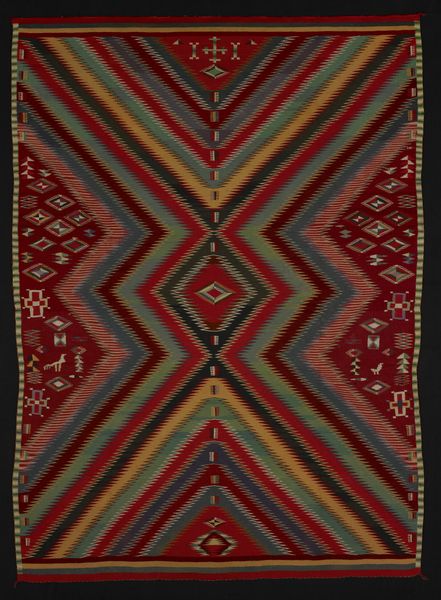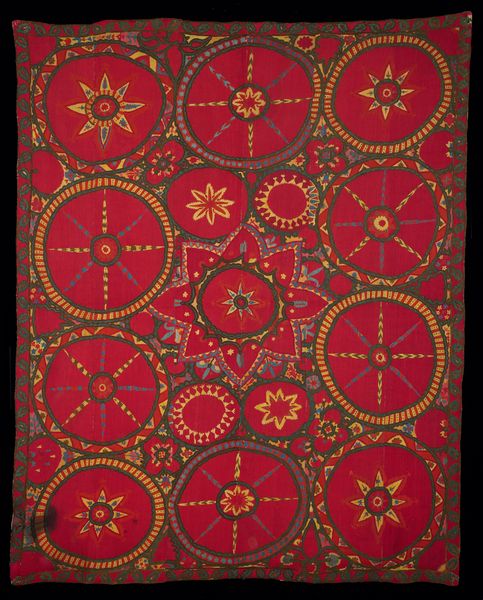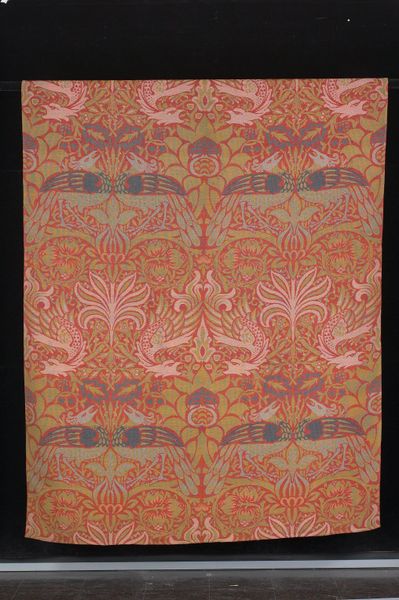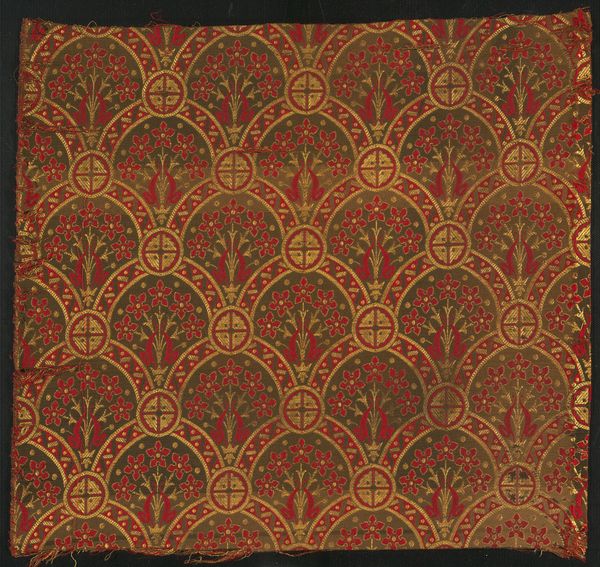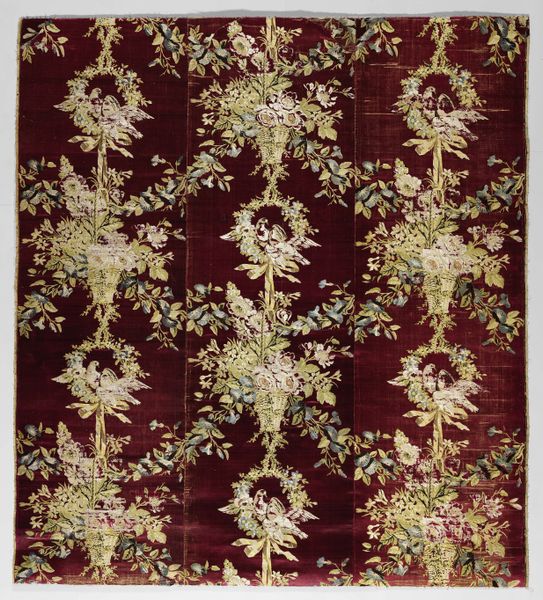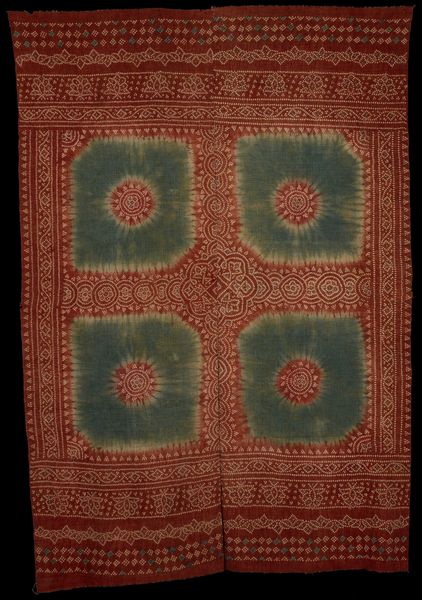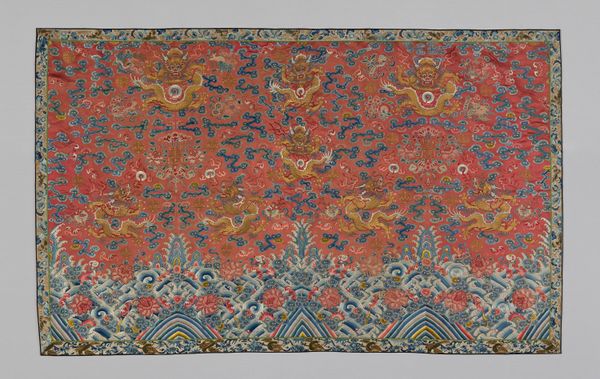
fibre-art, weaving, textile
#
natural stone pattern
#
fibre-art
#
pattern
#
pattern
#
weaving
#
textile
#
text
#
geometric pattern
#
abstract pattern
#
minimal pattern
#
organic pattern
#
repetition of pattern
#
costume
#
intricate pattern
#
pattern repetition
#
islamic-art
#
decorative-art
#
layered pattern
Dimensions: 374.65 × 170.5 cm (147 1/2 × 67 1/8 in.)
Copyright: Public Domain
Curator: This is a woven shawl, circa 1860s, maker unknown, though attributed to Clabburn, Sons and Crisp. It’s now held at the Art Institute of Chicago. What are your initial thoughts? Editor: Visually, it feels quite contained, despite the ornate pattern. The repeated teardrop motifs almost feel like stylized prison bars. It is oddly soothing despite the complexity, maybe the limited color palette. Curator: Indeed, the repeated motifs are interesting from a production standpoint. Shawls like these became highly desirable in Europe during the 19th century, especially those imitating Kashmir designs. Mechanization enabled manufacturers like Clabburn to produce these patterns on a large scale, impacting both the textile industry and fashion trends. The question is, what was the true social cost for this rise? Editor: The symmetry, while hinting at a controlled manufacturing process, is disrupted by subtle color variations within the individual tear drops. Each unit holds a spectrum that's intriguing to analyze, how the light falls on the weaving, the slight color shifting and shading techniques used on each unit to produce this layered design. Curator: Absolutely, those small variations also tell a story. The shawl served as a status symbol. Ownership signified wealth, but it also masked the labor conditions of those who produced them. It is a strange duality of luxury and the exploitation. Editor: Yes, the paisley pattern’s omnipresence is so interesting. It transcends culture, from its origins to the Western mass market to present-day revival in various decorative fields. Looking closely, the patterns almost disguise a vertical column structure; its layout is subtle and carefully positioned. The weavers truly understood color composition, too, didn’t they? Curator: Yes, and the way the pattern conceals structural elements is key! To me, that’s an illustration of consumption. The desire for novelty masks the more tedious, systematic, often exploitative labor which underlies the entire operation. Editor: A somber consideration of design, production, and human cost; I’ll think about that today. Curator: It complicates how we view objects of beauty, certainly. I'm glad we paused to consider this work and its multiple layers of significance.
Comments
No comments
Be the first to comment and join the conversation on the ultimate creative platform.
